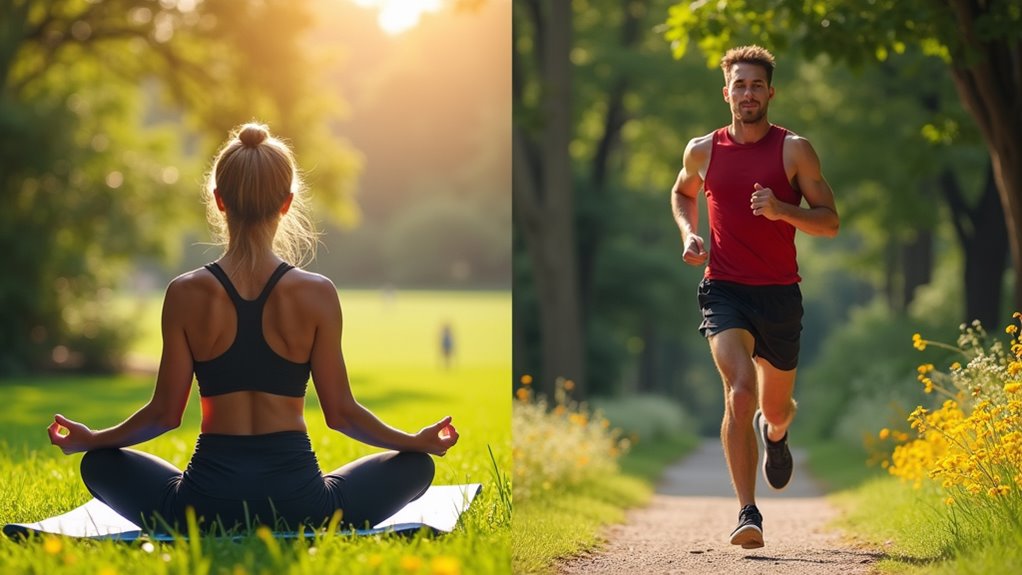
When was yoga developed? A quick look back
Millennia ago, yoga emerged from ancient India’s spiritual roots, blending mind and body—discover how this timeless practice evolved into what we know today.


Wellness and fitness are often talked about as if they’re the same—but they play very different roles in your health.

The real question isn’t just which one to focus on—it’s how combining them can transform your body, mind, and daily life.
So, what’s the difference between wellness and fitness, and why does understanding it matter for a balanced, sustainable lifestyle? The answer might change the way you approach your health.
Wellness encompasses more than physical health, integrating mental, emotional, and social dimensions into a unified state of well-being.
It emphasizes balance and proactive care, ensuring individuals feel secure in their overall health.
This holistic approach encourages safe practices that support resilience, emotional stability, and positive relationships, fostering a stable foundation for long-term health beyond mere absence of illness or injury.
Physical strength and endurance serve as key indicators of overall fitness, which centers primarily on the body’s capacity to perform various physical activities effectively.
Fitness emphasizes safe exercise practices, proper conditioning, and injury prevention. It involves regular movement, cardiovascular health, muscle strength, and flexibility, all aimed at supporting daily function and reducing health risks without overexertion or unsafe techniques.
A balanced approach to health encompasses multiple dimensions beyond mere physical condition.
Key components of wellness include emotional stability, mental clarity, social connection, and spiritual peace.
Attention to nutrition and stress management also plays a crucial role.
These elements collectively support overall well-being, fostering resilience and safety in daily life without focusing solely on physical fitness or exercise routines.
Fundamental to any fitness regimen are several core elements that contribute to overall physical capability and health.
These include cardiovascular endurance, muscular strength, flexibility, and body composition.
Prioritizing gradual progression and proper technique helps minimize injury risks.
Attention to rest and recovery is also essential, ensuring the body adapts safely while maintaining consistent, balanced improvements in physical fitness.
Balance serves as the foundation for understanding how wellness and fitness interact.
Fitness activities improve physical health, while wellness promotes overall safety and prevention through healthy habits. Together, they create a harmonious cycle: fitness supports bodily function, and wellness ensures sustainable, injury-free progress.
This complementary relationship encourages a secure approach to achieving long-term health goals.
Although often considered separately, mental health is intricately connected to both wellness and fitness.
Physical activity supports emotional stability by reducing stress and anxiety, while overall wellness promotes balanced mental states through self-care and rest.
Together, they create a safe, supportive environment that encourages positive mental health, fostering resilience and enhancing quality of life without compromising personal safety.
Mental health and physical activity are deeply influenced by the nutrients the body receives. Proper nutrition supports energy levels, immune function, and cognitive clarity, essential for both wellness and fitness.
Safe, balanced dietary choices promote recovery and overall health, reducing injury risk. Understanding nutrition’s role helps maintain physical performance while fostering mental and emotional stability in a secure, sustainable manner.
When integrating wellness and fitness, a comprehensive approach emphasizes consistent physical activity alongside mindful self-care practices.
This balanced lifestyle supports both mental and physical health by combining exercise with adequate rest, stress management, and proper nutrition.
Prioritizing safety includes gradual progression, listening to one’s body, and consulting professionals to prevent injury and maintain long-term well-being.
While fitness progress is often quantified through measurable physical markers such as strength, endurance, and body composition, wellness progress encompasses a broader range of indicators including emotional balance, stress levels, and overall life satisfaction.
Tracking wellness requires self-awareness and reflection, emphasizing gradual improvements.
Both approaches prioritize safety by encouraging realistic goals and avoiding harmful practices during assessment and development.
Wellness and fitness, while interconnected, serve distinct roles in overall health. Wellness adopts a holistic perspective, addressing emotional, mental, social, and physical well-being. Fitness concentrates specifically on physical strength and endurance through exercise. Together, they create a balanced lifestyle that promotes both bodily function and emotional stability. Recognizing their complementary nature allows individuals to pursue a comprehensive approach to health, enhancing resilience, safety, and long-term well-being.

Millennia ago, yoga emerged from ancient India’s spiritual roots, blending mind and body—discover how this timeless practice evolved into what we know today.

Not only does exercise boost mood through endorphins, but it also combats stress and anxiety—discover the surprising ways it transforms mental health.

Find five powerful benefits of daily meditation that transform your mind and body—discover why this simple habit is truly life-changing.

Increasingly, hobbies are recognized not just for fun but for their profound impact on mental health, personal growth, and social connection—discover why they matter.

Find four powerful ideas to boost your self-esteem and transform your mindset—discover how small changes can lead to lasting confidence and growth.

Find out if weight training truly stunts growth or if it's just a myth—discover what science and experts reveal before you decide.